The January 12-13, 2024 Winter Storm
|
Event Overview A strong low pressure system storm moved from the southern Plains northeast into the central Great Lakes, bringing near-blizzard conditions to the southeast half of Wisconsin from January 12 to early January 13, 2024. The low pressure system strengthened rapidly as it approached southern lower Michigan by early evening January 12. By 6 am Saturday January 13, the storm dumped a swath of heavy wet snow that was accompanied by very strong northeast winds that created 2-3 foot snow drifts. The highest snow totals (~18 inches), were associated with a relatively narrow lake-enhanced snow band that meandered over far northern Brown, southern Oconto and Door counties. The snow band produced snowfall rates up to 2 inches per hour and near whiteout conditions at times. The intense surface low pressure developed in associated with strong upper-level jet stream energy that dove southward into Texas a few days earlier, then raced northeast toward the Great Lakes Region. Roads quickly became snow covered, making for hazardous travel conditions. Some school activities and businesses were closed Friday into Saturday. Winds of 35 to 55 mph caused sporadic power outages with over 100,000 customers losing power during the storm. On Lake Michigan, winds gusted to around 40-45 kts and created waves of 10 to 18 feet.
RAP Analysis - Wind Barbs and Mean Sea Level Pressure (MSL). The track of the low pressure system is denoted by the "L" on the analysis.
Please see tabs below for more information. |
RAP Analysis - Wind Barbs, Wind speed (shaded) and Heights (solid black lines). Red "J" denotes the approximate location of strong jet maximum. Analysis is at 500 mb. |
Snow Reports
...PRELIMINARY SNOWFALL REPORTS... Location Amount Time/Date Lat/Lon ...Wisconsin... ...Brown County... Suamico 18.0 in 1036 AM 01/13 44.63N/88.05W Howard 17.0 in 1034 AM 01/13 44.56N/88.06W Suamico 17.0 in 1032 AM 01/13 44.63N/88.05W 2 ENE Oneida 15.0 in 1036 AM 01/13 44.52N/88.16W De Pere 14.0 in 0852 AM 01/13 44.45N/88.06W NWS Green Bay 13.5 in 0600 AM 01/13 44.50N/88.11W 3 SE De Pere 13.0 in 0933 AM 01/13 44.42N/88.01W Green Bay 3.8 SSE 13.0 in 0700 AM 01/13 44.47N/87.97W 2 WNW Ashwaubenon 11.8 in 1200 AM 01/13 44.50N/88.11W Wrightstown 11.5 in 0738 AM 01/13 44.33N/88.17W ...Calumet County... Chilton 0.5 E 12.0 in 0700 AM 01/13 44.03N/88.15W 2 SSW High Cliff State Park 11.0 in 1013 AM 01/13 44.14N/88.29W ...Door County... 1 SSE Institute 16.0 in 0900 AM 01/13 44.89N/87.30W Sturgeon Bay 14.4 in 0735 AM 01/13 44.83N/87.38W Sister Bay 12.8 in 1130 PM 01/12 45.18N/87.11W ...Florence County... Spread Eagle 1 NW 3.0 in 0700 AM 01/13 45.89N/88.14W ...Forest County... Argonne 1.5 NW 3.8 in 0736 AM 01/13 45.67N/88.90W ...Kewaunee County... 2 WNW Luxemburg 15.0 in 0848 AM 01/13 44.54N/87.72W Casco 0.4 NNW 7.5 in 0703 AM 01/13 44.56N/87.62W ...Lincoln County... Tomahawk 1.2 SSW 3.5 in 0700 AM 01/13 45.46N/89.73W Merrill 8 W 3.2 in 0600 AM 01/13 45.18N/89.85W Harrison 3.0 in 0855 AM 01/13 45.48N/89.50W Bradley 1.0 NE 2.4 in 0700 AM 01/13 45.54N/89.73W ...Manitowoc County... 2 E Millhome 15.1 in 0715 AM 01/13 43.90N/87.91W Millhome 2 E 15.1 in 0715 AM 01/13 43.90N/87.91W 2 NW Two Rivers 11.7 in 0700 AM 01/13 44.18N/87.58W 2 NW Two Rivers 11.7 in 0700 AM 01/13 44.18N/87.58W Manitowoc 1.4 NW 9.7 in 0700 AM 01/13 44.11N/87.69W Two Rivers 9.2 in 0931 AM 01/13 44.15N/87.56W ...Marathon County... Wausau WSAW TV 4.1 in 1100 PM 01/12 44.95N/89.62W Weston 1 NE 2.7 in 0700 AM 01/13 44.92N/89.54W Stratford 1 NW 2.3 in 0729 AM 01/13 44.82N/90.09W ...Marinette County... Peshtigo 1 S 8.0 in 0730 AM 01/13 45.03N/87.74W ...Oconto County... Oconto Falls 1.0 SE 10.7 in 0615 AM 01/13 44.86N/88.13W Mountain 0.9 E 4.3 in 0700 AM 01/13 45.18N/88.46W ...Oneida County... Rhinelander 5.5 NW 3.2 in 0600 AM 01/13 45.70N/89.48W Rhinelander 3.2 in 1130 PM 01/12 45.62N/89.41W Hazelhurst 2.1 SSE 2.0 in 0700 AM 01/13 45.78N/89.70W Minocqua 2.0 in 0630 AM 01/13 45.89N/89.73W ...Outagamie County... Kaukauna 15.0 in 0857 AM 01/13 44.26N/88.26W 3 NE Appleton 11.5 in 0927 AM 01/13 44.29N/88.37W 1 NE Shiocton 10.0 in 0843 AM 01/13 44.45N/88.56W New London 4.1 N 9.0 in 0600 AM 01/13 44.45N/88.73W ...Portage County... Amherst 3 SE 8.0 in 0700 AM 01/13 44.41N/89.26W Amherst 2.6 SSE 8.0 in 0700 AM 01/13 44.41N/89.26W Rosholt 5.3 in 0931 AM 01/13 44.63N/89.30W Rudolph 1 NNE 3.2 in 0500 AM 01/13 44.53N/89.79W ...Shawano County... 1 NW Tigerton 8.0 in 0925 AM 01/13 44.74N/89.06W Shawano 2 SSW 7.5 in 0800 AM 01/13 44.76N/88.62W Shawano 7.5 in 0800 AM 01/13 44.78N/88.59W Shawano 5.3 WNW 5.8 in 0713 AM 01/13 44.80N/88.69W ...Vilas County... Boulder Junction 9 ENE 2.7 in 0700 AM 01/13 46.19N/89.46W Boulder Junction 1.4 NE 2.1 in 0700 AM 01/13 46.13N/89.62W St Germain 0.6 NW 1.9 in 0700 AM 01/13 45.92N/89.49W ...Waupaca County... Manawa 13.5 in 0859 AM 01/13 44.46N/88.91W Clintonville 13.5 in 0735 AM 01/13 44.61N/88.75W Manawa 3.6 SSW 13.5 in 0700 AM 01/13 44.41N/88.95W Scandinavia 12.3 in 0951 AM 01/13 44.46N/89.13W ...Waushara County... Wild Rose 0.5 E 9.6 in 0700 AM 01/13 44.18N/89.24W ...Winnebago County... 2 NNE Oshkosh 10.0 in 0819 AM 01/13 44.03N/88.54W Omro 1 WSW 9.0 in 0700 AM 01/13 44.02N/88.78W Zittau 9.0 in 0600 AM 01/13 44.22N/88.78W Oshkosh 5.1 in 0700 AM 01/13 44.03N/88.56W ...Wood County... Wisconsin Rapids 6.0 in 0600 AM 01/13 44.39N/89.83W Pittsville - WWTP 2.5 in 0600 AM 01/13 44.44N/90.13W Observations are collected from a variety of sources with varying equipment and exposures. We thank all volunteer weather observers for their dedication. Not all data listed are considered official.
Records Set
Green Bay
Daily Snowfall Record for January 12 - 11.8" (Previous record was 11.5" in 1890)
Appleton
Daily Snowfall Record for January 12 - 9.5" (Previous record was 6.5" in 1966)
Wisconsin Rapids
Daily Snowfall Record for January 12 - 6.0" (Previous record was 5.0" in 1988)
Photos:
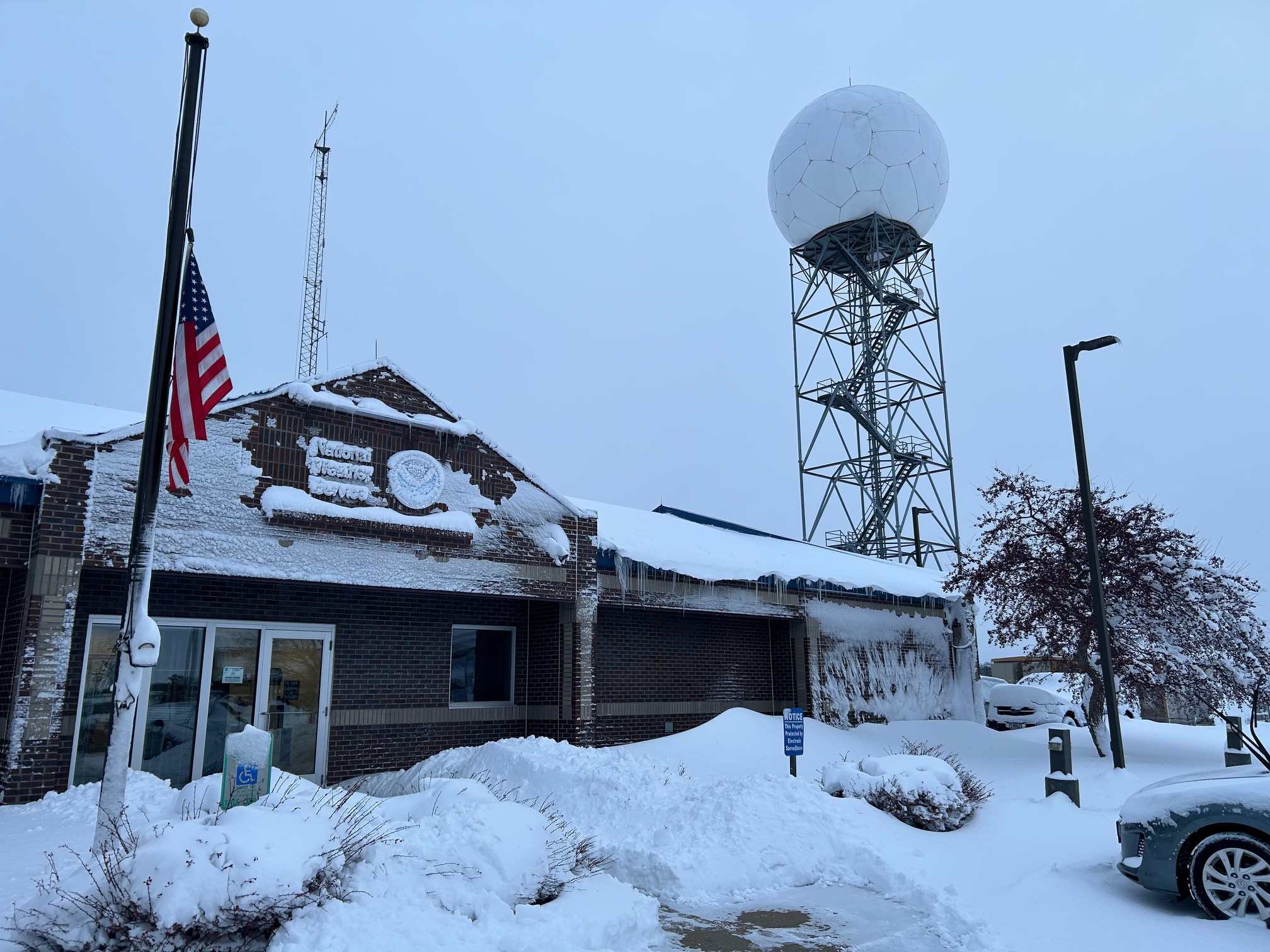 |
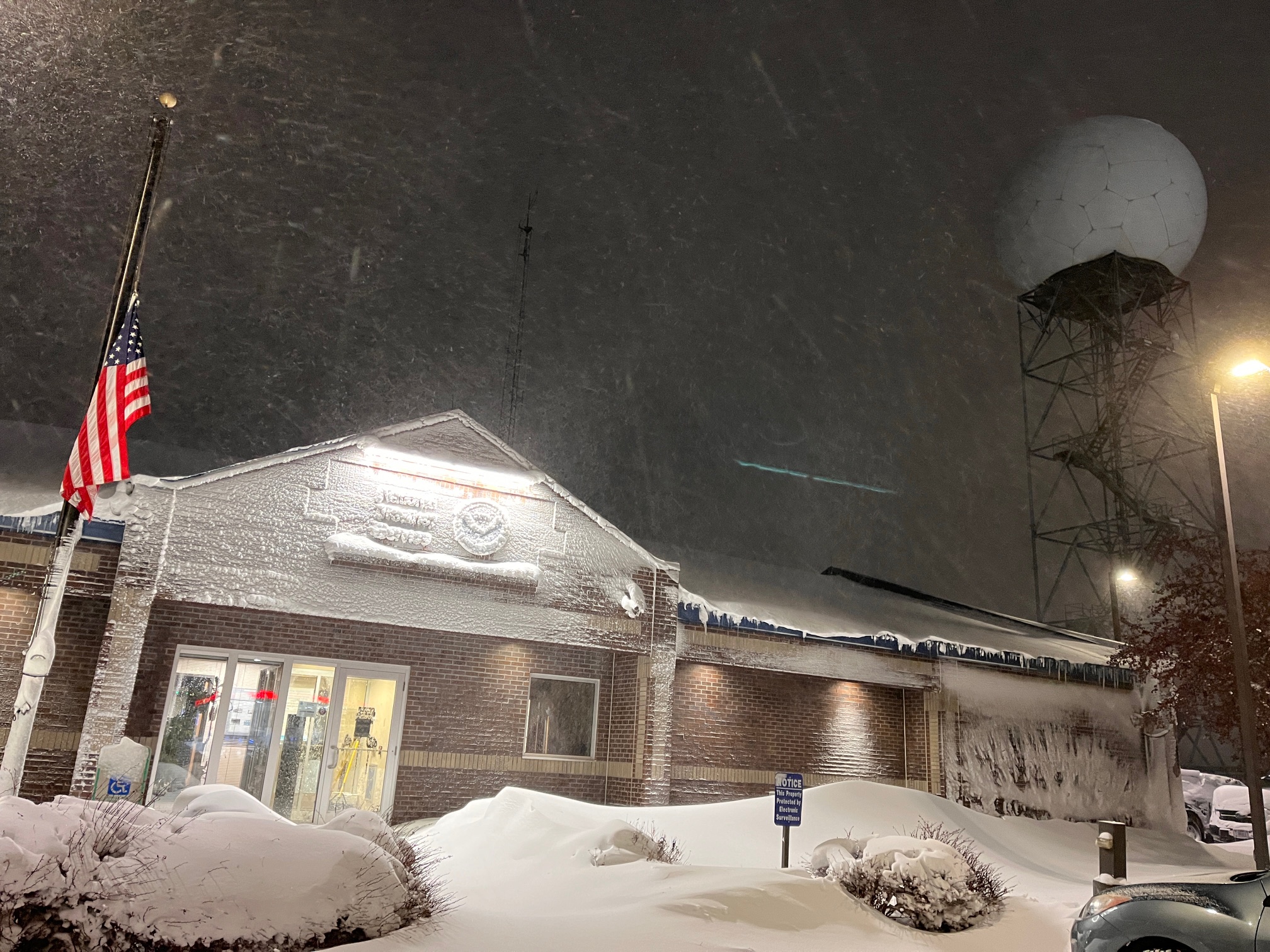 |
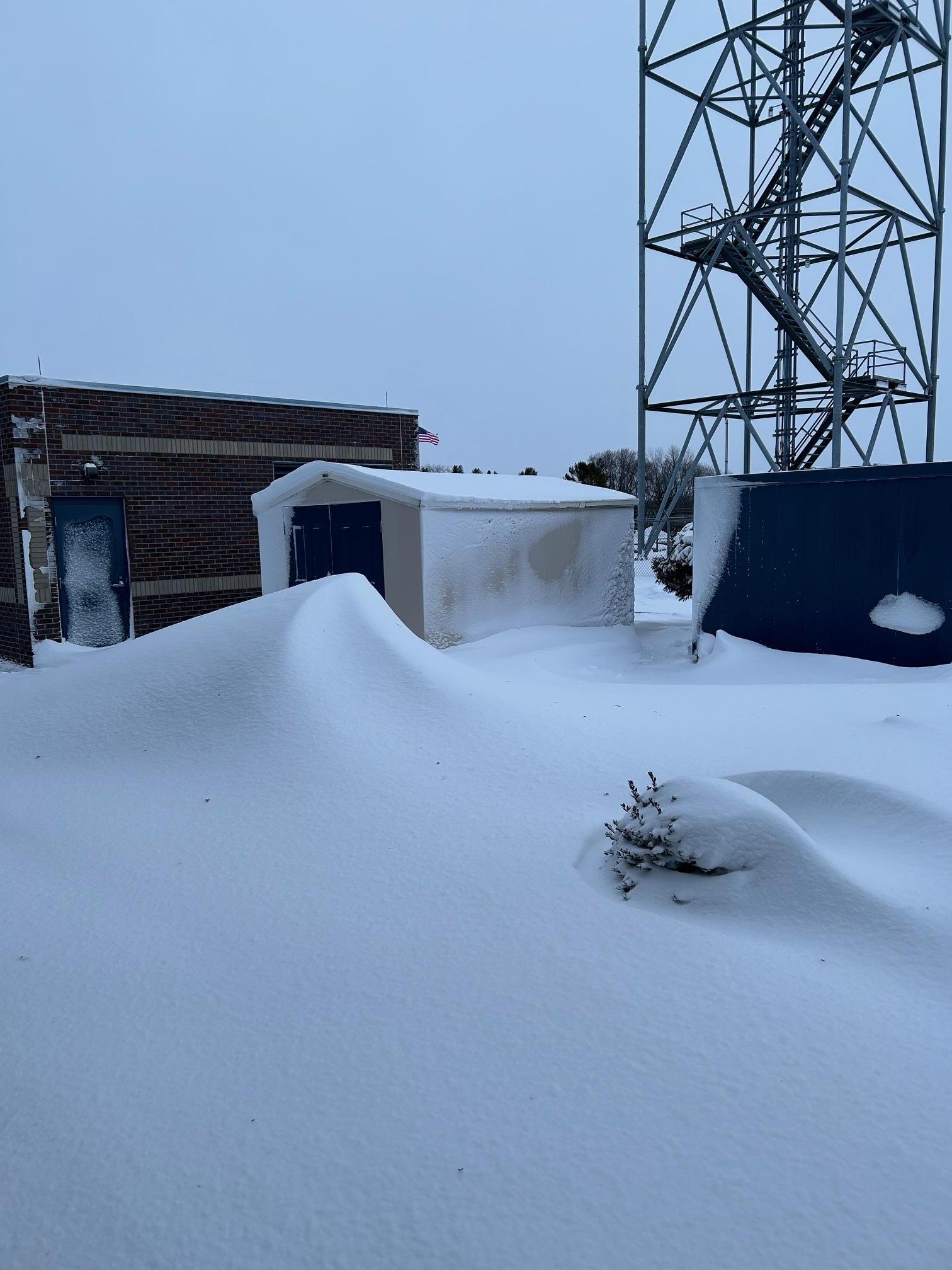 |
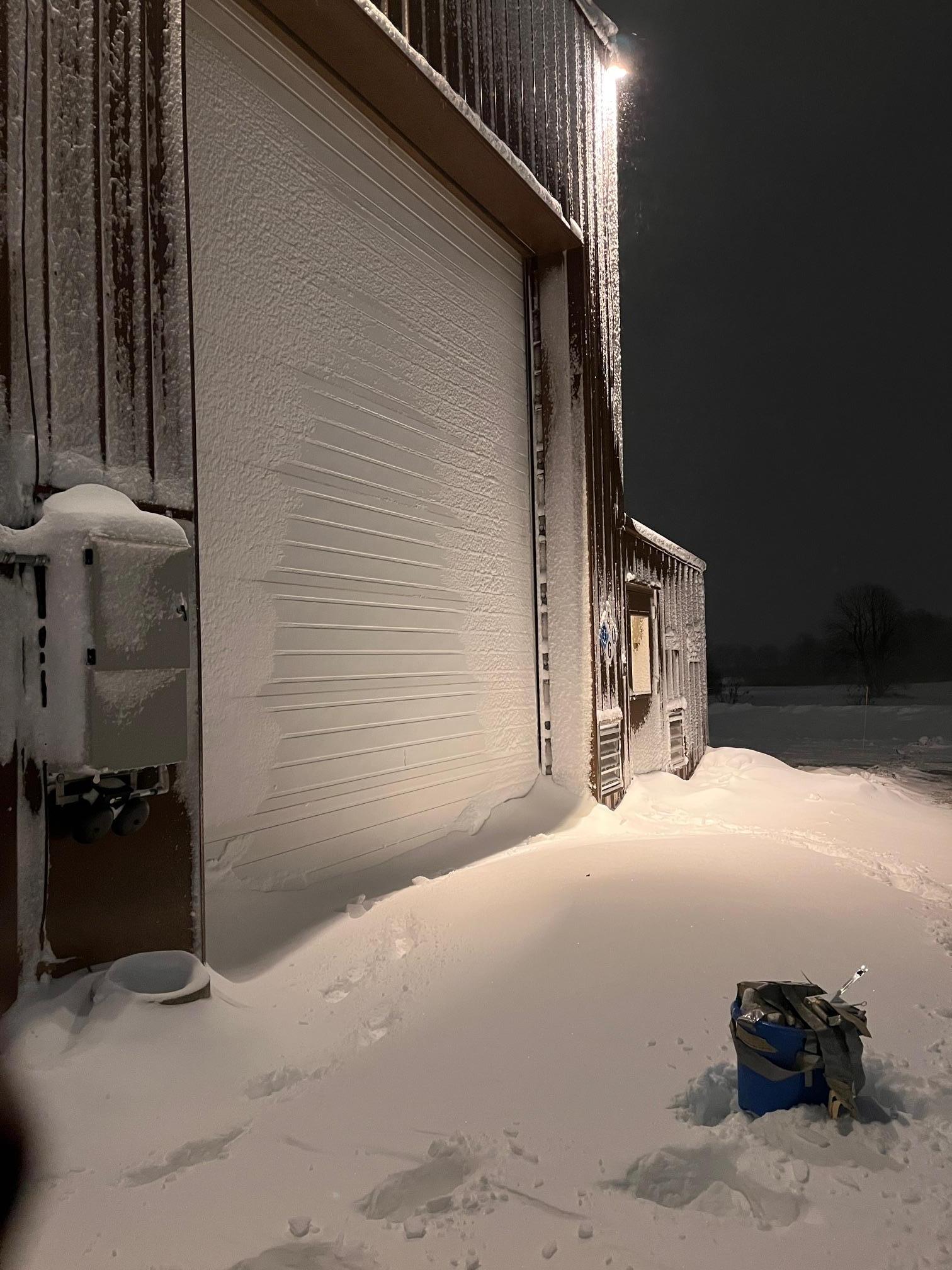 |
| NWS Green Bay Office | NWS Green Bay Office | NWS Green Bay Office | NWS Green Bay Upper Air Building |
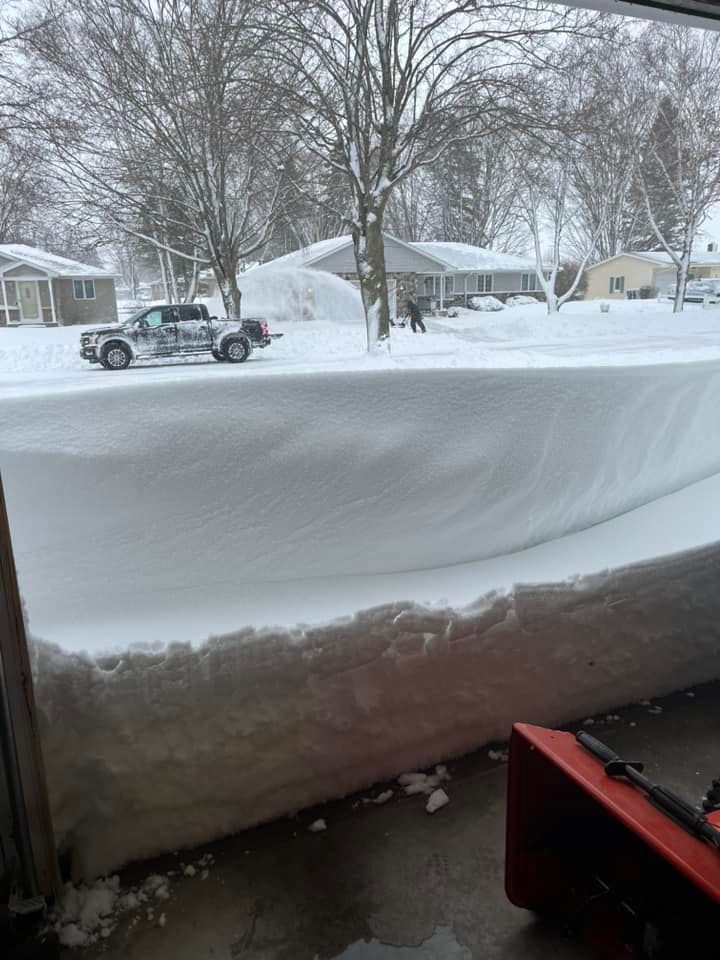 |
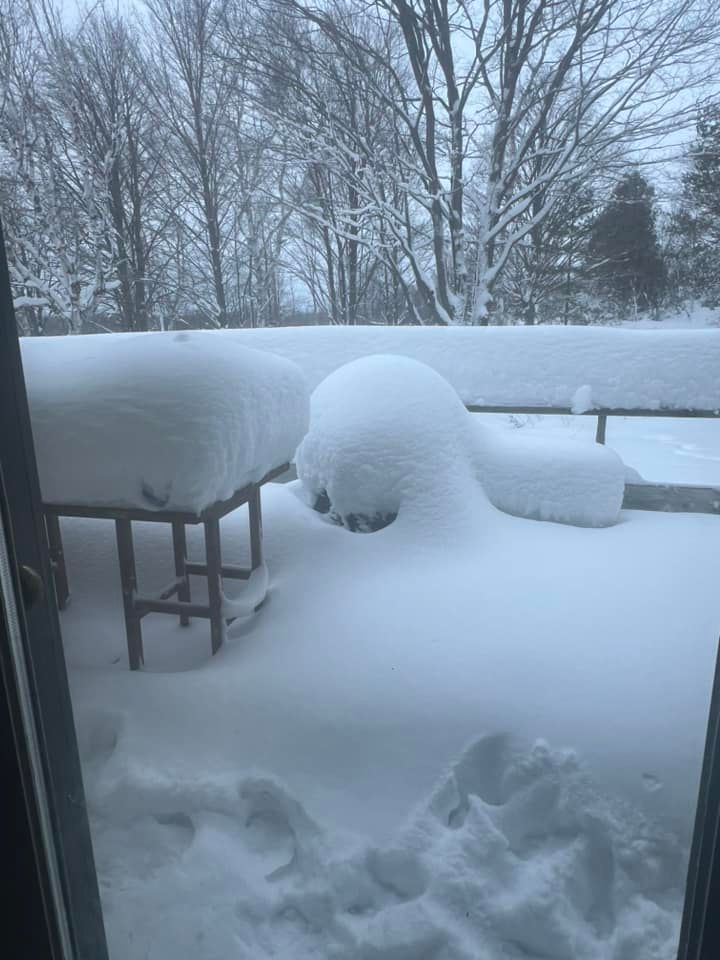 |
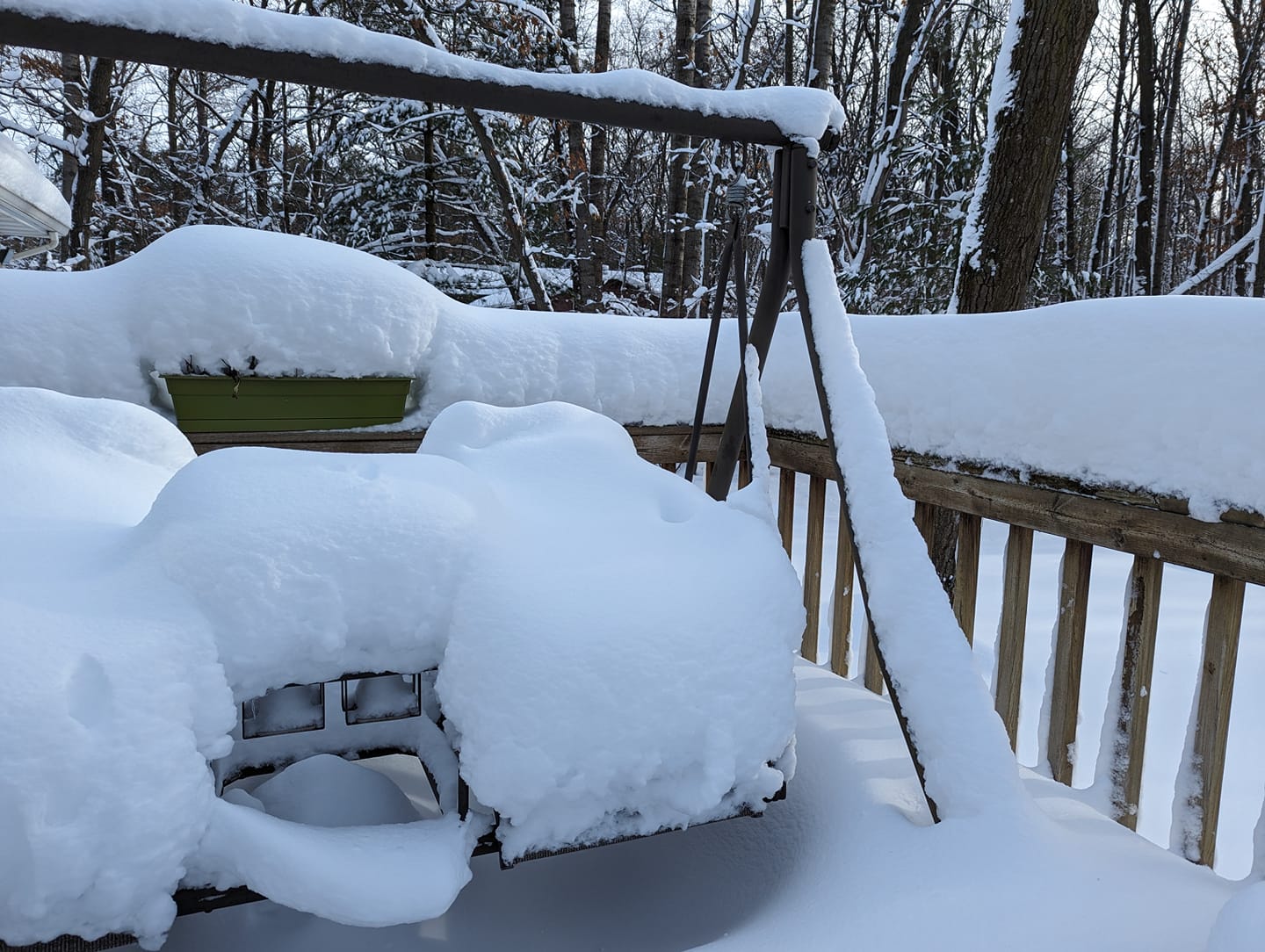 |
|
| Algoma Courtesy of DeeDee Sternard |
Sevastopol Courtesy of Shelly Cook Bath |
Suamico Courtesy of Cindy Albin |
|
Satellite & Radar:
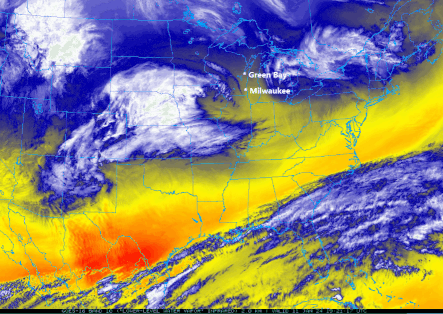
Low-level GOES-16 Water Vapor Animation Showing the Storm Evolution
Radar loop from midnight Jan 12, 2024 to midnight Jan 13, 2024

Enhanced radar loop. The white/dark purple colored areas denote hourly snowfall rates of 1-2 inches per hour. Note the SW-NE orientated snow band near and just north of Green Bay. This the area that received the highest snowfall.
Peak Winds
...PEAK 24-HOUR WIND GUST REPORTS... Location Speed Time/Date Lat/Lon -------------------------------------------------------------------- Green Bay Airport 54 MPH 0654 PM 01/12 44.48N/88.13W Kewaunee MET, WI 54 MPH 0848 PM 01/12 44.47N/87.50W Menominee 54 MPH 0842 PM 01/12 45.10N/87.59W I-43 Se End Of Leo Frigo Bri 54 MPH 0818 PM 01/12 44.51N/88.04W Oshkosh Airport 52 MPH 0815 PM 01/12 43.97N/88.55W Gills Rock 1 ENE 51 MPH 0700 AM 01/13 45.29N/86.98W Two Creeks 47 MPH 0820 PM 01/12 44.27N/87.55W Sturgeon Bay Airport 47 MPH 0702 AM 01/13 44.85N/87.42W Chambers Island 1 NNW 46 MPH 0940 PM 01/12 45.20N/87.36W Green Bay 1 N 44 MPH 0800 PM 01/12 44.54N/88.00W De Pere 40 MPH 0750 PM 01/12 44.44N/88.05W Ephraim 40 MPH 0515 AM 01/13 45.13N/87.18W Manitowoc Airport 40 MPH 0243 PM 01/12 44.12N/87.67W Antigo 2 ENE 39 MPH 0805 PM 01/12 45.16N/89.11W Washington Island 39 MPH 0715 AM 01/13 45.38N/86.92W Antigo Airport 39 MPH 0355 AM 01/13 45.15N/89.12W Ellison Bay 2.2 S (MAWN) 39 MPH 0645 AM 01/13 45.22N/87.07W Egg Harbor 3.1 SE (MAWN) 39 MPH 0850 PM 01/12 45.01N/87.23W Appleton Airport 38 MPH 1045 PM 01/12 44.27N/88.52W Wisconsin Rapids Airport 37 MPH 0204 PM 01/12 44.37N/89.83W Marshfield Airport 37 MPH 0346 AM 01/13 44.63N/90.18W Forest Junction 36 MPH 0455 AM 01/13 44.21N/88.21W Mosinee Airport 36 MPH 0515 AM 01/13 44.78N/89.67W Eagle River Airport 36 MPH 0555 AM 01/13 45.93N/89.27W Wausau Airport 35 MPH 0755 AM 01/13 44.93N/89.62W Clintonville Airport 35 MPH 0135 PM 01/12 44.62N/88.73W Oconto Airport 33 MPH 0635 PM 01/12 44.87N/87.92W Stevens Point Airport 33 MPH 0255 PM 01/12 44.55N/89.53W Wautoma Airport 33 MPH 0655 PM 01/12 44.03N/89.30W Shawano Airport 32 MPH 0715 PM 01/12 44.78N/88.57W Land O Lakes 31 MPH 0535 AM 01/13 46.15N/89.22W Rhinelander Airport 31 MPH 0321 PM 01/12 45.63N/89.48W Merrill Airport 31 MPH 0635 AM 01/13 45.20N/89.72W Arbor Vitae Airport 30 MPH 0415 AM 01/13 45.92N/89.72W Observations are collected from a variety of sources with varying equipment and exposures. We thank all volunteer weather observers for their dedication. Not all data listed are considered official.
A meteogram of wind speed (red line) and wind gusts (green plus signs) at Green Bay, Wisconsin. Note that the strongest winds (at Green Bay) occurred between about 6 pm (00Z) and 8 pm (02Z). The peak gust of 54 mph was recorded at 654 pm CST.
 |
Media use of NWS Web News Stories is encouraged! Please acknowledge the NWS as the source of any news information accessed from this site. |
 |